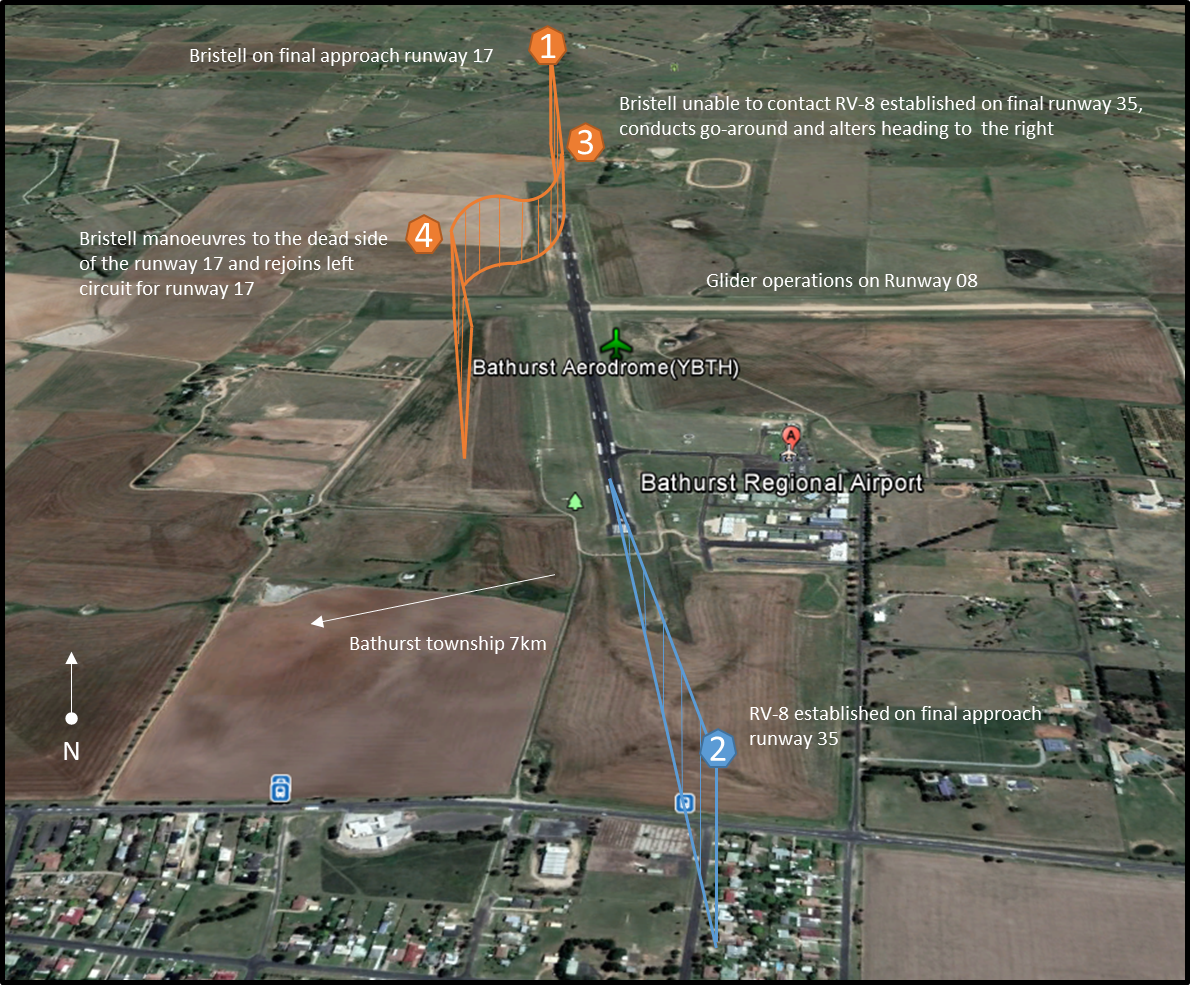| Occurrence Briefs are concise reports that detail the facts surrounding a transport safety occurrence, as received in the initial notification and any follow-up enquiries. They provide an opportunity to share safety messages in the absence of an investigation. |
What happened
On the afternoon of 27 April 2018, a BRM Aero Bristell was conducting flight training at Bathurst Airport, New South Wales. During final approach to runway 17 at, the crew observed a Van's RV-8 on short final approach to runway 35. The crew of the Bristell conducted a go-around[1] and manoeuvred to the dead side[2] of runway 17 to maintain separation and visibility of the RV-8 on final for runway 35 while trying to contact the RV-8 by radio with no response. The Bristell re-joined the circuit and both aircraft landed without further incident.
It was later established that the pilot of the RV-8 had not selected the appropriate radio frequency for Bathurst and was distracted by glider operations on runway 08 and had not seen the Bristell until after landing.
Figure 1: Separation sequence of events at Bathurst Aerodrome

Source: Google Earth image annotated by ATSB
Safety action
As a result of this occurrence, the RV-8 pilot advised the ATSB that they will in future write the relevant frequencies of the destination aerodrome on the flight plan in the pilot notes area, to have them readily available in flight.
Safety message

Maintaining situational awareness of your surroundings is a key element of safe operations in the vicinity of non-towered aerodromes. Pilots should:
- maintain effective lookout
- use radio to supplement un-alerted see and avoid
- be aware that other aircraft may not be on the correct frequency or broadcasting.
Appropriate radio broadcasts made on the correct frequency within 10 NM of non-towered aerodromes whilst maintaining good visual scanning is eight times more effective than normal lookout in detecting and avoiding other traffic.
The ATSB booklet A pilot’s guide to staying safe in the vicinity of non-controlled aerodromes outlines many of the common problems that occur at non-controlled aerodromes, and offers useful strategies to keep yourself and other pilots safe.
The Civil Aviation Safety Authority (CASA) has produced several publications and resources that provide important safety advice for operations at, or in the vicinity of non-towered aerodromes.
About this report
Decisions regarding whether to conduct an investigation, and the scope of an investigation, are based on many factors, including the level of safety benefit likely to be obtained from an investigation. For this occurrence, no investigation has been conducted and the ATSB did not verify the accuracy of the information. A brief description has been written using information supplied in the notification and any follow-up information in order to produce a short summary report, and allow for greater industry awareness of potential safety issues and possible safety actions.
__________


